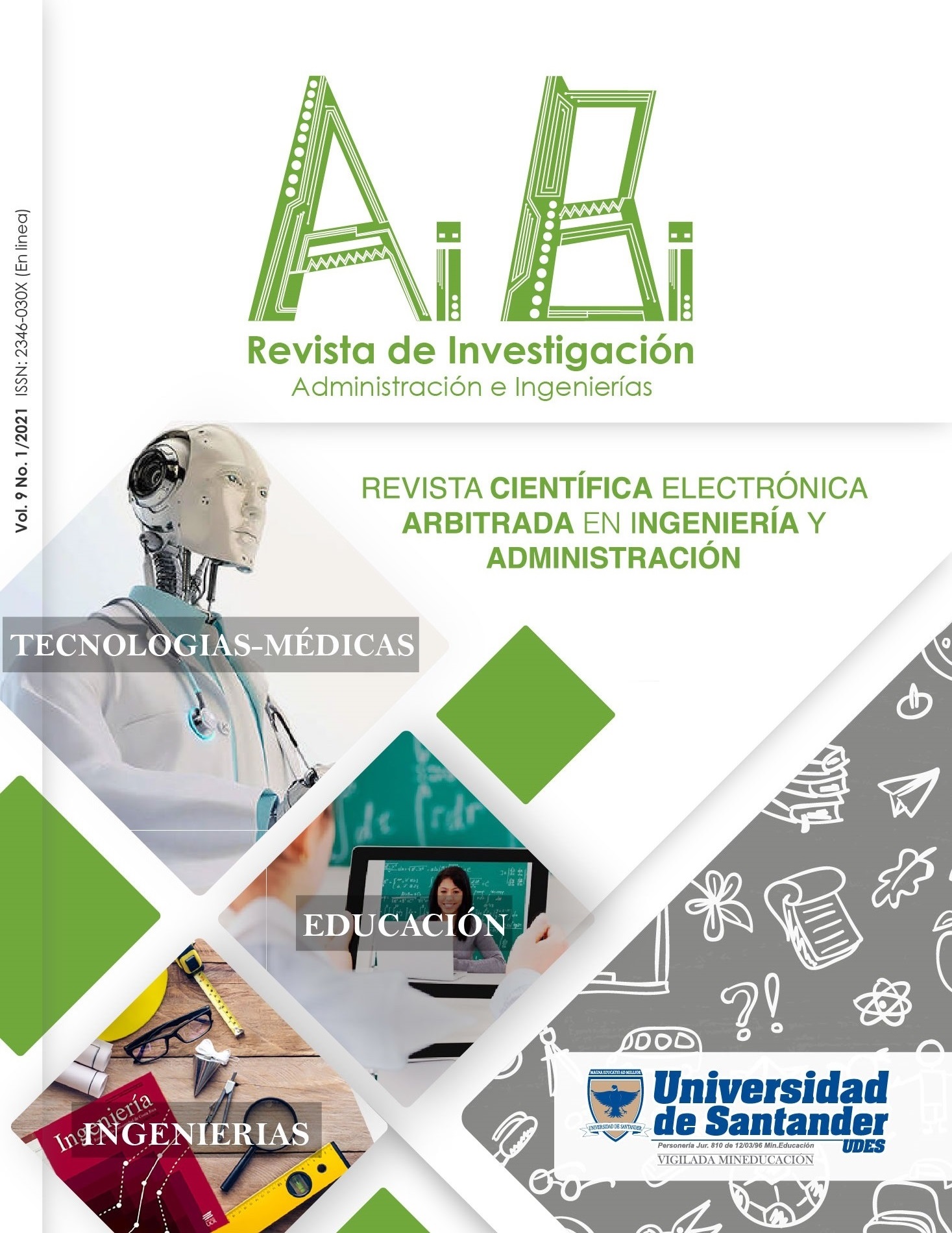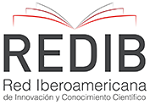Exhaust gases reuse in natural gas compression stations for electricity generation
DOI:
https://doi.org/10.15649/2346030X.975Palabras clave:
ciclo de potencia, simulación numéricafluido orgánico, balance energéticoResumen
In view of worldwide concern for the increase in energy consumption, as well as the application of viable alternatives that allow a better use of available energy sources, thermal waste has emerged as an energy alternative in industrial applications in which it is generated. In this sense, the present work analyses the energy potential of combustion gases emitted by a compression station, which can be used as heat source for a Rankine power cycle, which operates with different working fluids, including nine of organic type and the carbon dioxide (CO2). The simulations demonstrated the capacity of the working fluids to increase the energy efficiency of the installation from the exhaust gases of the compression station, where toluene and CO2 stand out for presenting the highest efficiency levels, 21 and 20%, respectively. With the target of generating power, the results showed that refrigerant fluids considered in this analysis are not suitable at the temperature levels evaluated.
Referencias
A. Mahmoudi, M. Fazli, and M. R. Morad, ‘A recent review of waste heat recovery by Organic Rankine Cycle’, Applied Thermal Engineering, vol. 143, pp. 660–675, Oct. 2018.
C. J. N. Sanchez, N. A. García, and G. G. Gómez, ‘Carbon dioxide mixtures for organic power cycles using waste heat sources’, J. Phys.: Conf. Ser., vol. 1409, p. 012016, Nov. 2019.
C. J. Noriega Sanchez, L. Gosselin, and A. K. da Silva, ‘Designed binary mixtures for subcritical organic Rankine cycles based on multiobjective optimization’, Energy Conversion and Management, vol. 156, pp. 585–596, Jan. 2018.
H. Chen, D. Y. Goswami, and E. K. Stefanakos, ‘A review of thermodynamic cycles and working fluids for the conversion of low-grade heat’, Renewable and Sustainable Energy Reviews, vol. 14, no. 9, pp. 3059–3067, Dec. 2010.
N. Chagnon-Lessard, F. Mathieu-Potvin, and L. Gosselin, ‘Geothermal power plants with maximized specific power output: Optimal working fluid and operating conditions of subcritical and transcritical Organic Rankine Cycles’, Geothermics, vol. 64, pp. 111–124, Nov. 2016.
D. Wang, X. Ling, H. Peng, L. Liu, and L. Tao, ‘Efficiency and optimal performance evaluation of organic Rankine cycle for low grade waste heat power generation’, Energy, vol. 50, pp. 343–352, Feb. 2013.
B. F. Tchanche, G. Papadakis, G. Lambrinos, and A. Frangoudakis, ‘Fluid selection for a low-temperature solar organic Rankine cycle’, Applied Thermal Engineering, vol. 29, no. 11, pp. 2468–2476, Aug. 2009.
B. Dai, M. Li, and Y. Ma, ‘Thermodynamic analysis of carbon dioxide blends with low GWP (global warming potential) working fluids-based transcritical Rankine cycles for low-grade heat energy recovery’, Energy, vol. 64, pp. 942–952, Jan. 2014.
I. Sarbu, ‘A review on substitution strategy of non-ecological refrigerants from vapour compression-based refrigeration, air-conditioning and heat pump systems’, International Journal of Refrigeration, vol. 46, pp. 123–141, Oct. 2014.
J. M. Calm, ‘The next generation of refrigerants – Historical review, considerations, and outlook’, International Journal of Refrigeration, vol. 31, no. 7, pp. 1123–1133, Nov. 2008.
M. H. Kim, J. Pettersen, and C. W. Bullard, ‘Fundamental process and system design issues in CO2 vapor compression systems’, Progress in Energy and Combustion Science, vol. 30, no. 2, pp. 119–174, Jan. 2004.
T. C. Hung, ‘Waste heat recovery of organic Rankine cycle using dry fluids’, Energy Conversion and Management, vol. 42, no. 5, pp. 539–553, Mar. 2001.
DOE, ‘Waste Heat Recovery: Technology and Opportunities in U.S. Industry’, BCS, 2008.
B. F. Tchanche, Gr. Lambrinos, A. Frangoudakis, and G. Papadakis, ‘Low-grade heat conversion into power using organic Rankine cycles – A review of various applications’, Renewable and Sustainable Energy Reviews, vol. 15, no. 8, pp. 3963–3979, Oct. 2011.
A. I. Papadopoulos, M. Stijepovic, and P. Linke, ‘On the systematic design and selection of optimal working fluids for Organic Rankine Cycles’, Applied Thermal Engineering, vol. 30, no. 6, pp. 760–769, May 2010.
E. Wali, ‘Optimum working fluids for solar powered Rankine cycle cooling of buildings’, Solar Energy, vol. 25, no. 3, pp. 235–241, Jan. 1980.
S. Quoilin, M. V. D. Broek, S. Declaye, P. Dewallef, and V. Lemort, ‘Techno-economic survey of Organic Rankine Cycle (ORC) systems’, Renewable and Sustainable Energy Reviews, vol. 22, pp. 168–186, Jun. 2013.
R. El Chammas, D. Clodic, and P. Dewallef, ‘Combined Cycle for Hybrid Vehicles’, SAE, p. 12, 2005.
M. Hendryx and J. Luo, ‘Natural gas pipeline compressor stations: VOC emissions and mortality rates’, The Extractive Industries and Society, vol. 7, no. 3, pp. 864–869, Jul. 2020.
F. Guerrero-Suárez and F. Llano-Camacho, ‘Gas natural en Colombia - Gas E.S.P’, Estudios Gerenciales, vol. 19, no. 87, pp. 115–146, Jun. 2003.
E. Macchi and M. Astolfi, Organic Rankine Cycle (ORC) Power Systems. Elsevier, 2017.
Y. Liu, Y. Wang, and D. Huang, ‘Supercritical CO2 Brayton cycle: A state-of-the-art review’, Energy, vol. 189, p. 115900, Dec. 2019.
‘Welcome to CoolProp — CoolProp 6.4.1 documentation’. http://www.coolprop.org/index.html.
C. J. N. Sánchez and A. K. da Silva, ‘Technical and environmental analysis of transcritical Rankine cycles operating with numerous CO2 mixtures’, Energy, vol. 142, pp. 180–190, Jan. 2018.
Y. Cengel and M. Boles, ‘Thermodynamics: An Engineering‘ Approach, 8th ed. McGraw-Hill Education, 2014.
Descargas
Publicado
Cómo citar
Descargas
Número
Sección
Licencia
La revista ofrece acceso abierto bajo una Licencia Creative Commons Attibution License

Esta obra está bajo una licencia Creative Commons Attribution (CC BY 4.0).









